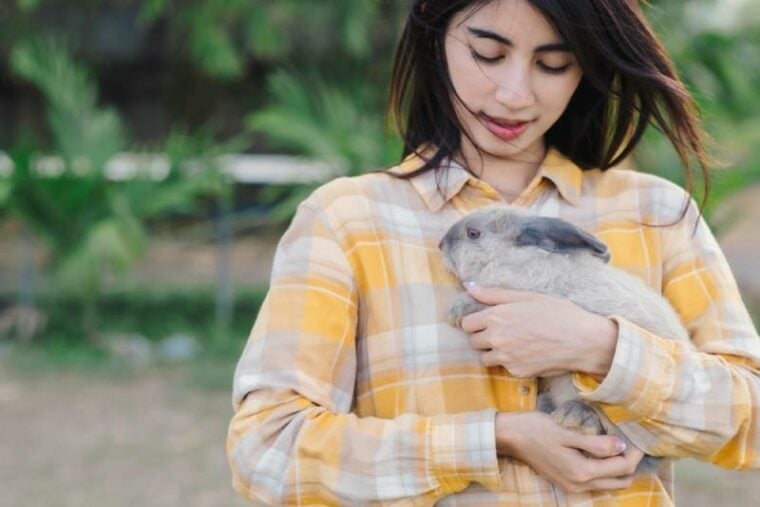
Click to Skip Ahead
If you are considering getting a pet rabbit, it is important to be aware of the advantages and disadvantages that come with owning one. This article will provide an overview of the pros and cons of having a pet rabbit, so you can make an informed decision about whether this type of pet is right for you.
Pros of Pet Rabbits
1. They Can Be Kept Indoors
Indoor rabbits are protected from predators, extreme weather conditions, and parasites, reducing the risk of injury or illness. Indoor environments offer stable temperature control, ensuring that your rabbit remains comfortable and healthy throughout the year. Indoor rabbits also have more opportunities for social interaction with their human family members, helping them become more sociable and well-adjusted pets.
Spending more time with your rabbit indoors allows you to bond with them and better understand their unique personality and behaviors. It’s easier to monitor your rabbit’s health, eating habits, and behavior when they live indoors, allowing you to detect any potential issues early on.
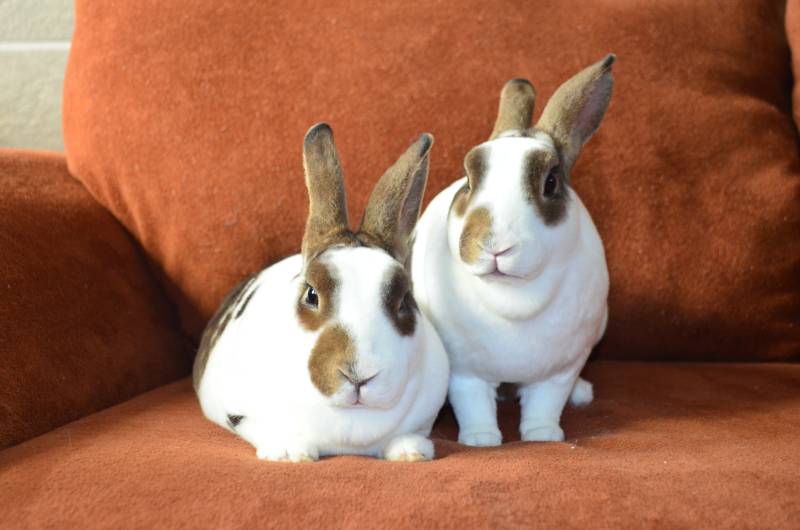
2. They Can Also Stay Outdoors
Outdoor rabbits can enjoy a more natural environment, including fresh air, sunlight, and opportunities to graze on grass. Outdoor rabbits typically have more room to roam and exercise in a garden or yard. Keeping rabbits outdoors reduces allergen exposure for allergy-prone family members.
3. There Are a Variety to Choose From
Just like there are different dog and cat breeds, you can also choose from a variety of different rabbit breeds. Some of the most common rabbit breeds kept as pets include:
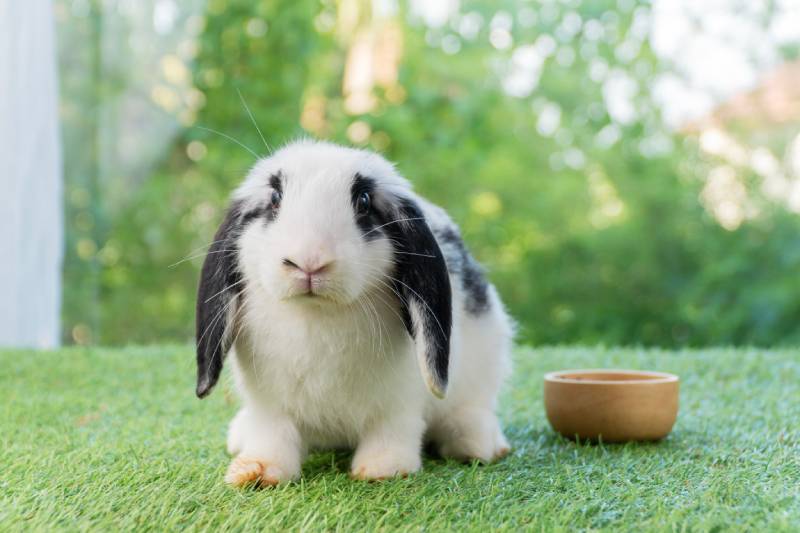
4. They Can Live in a Variety of Enclosures
When it comes to providing a suitable living environment for your pet rabbit, there are several options available, including hutches, play areas/pens, and yards. Each offers different things for a rabbit as far as space, shelter, and enrichment, so they have their own separate advantages and disadvantages. It’s important to consider where your rabbit will be staying when choosing enclosure types.
Hutches
A well-built hutch provides a secure environment that protects your rabbit from potential predators. Hutches offer a sheltered space where rabbits can hide and rest, shielding them from harsh weather conditions. Many rabbit hutches are designed with removable trays or easy-to-clean surfaces, making maintenance more manageable. Hutches should be used in combination with a “run” enclosure for exercise.
Play Areas/Pens
Play areas and pens provide rabbits with ample space to run, jump, and explore, promoting physical and mental well-being. You can add toys, tunnels, and hiding spots to a play area, offering mental stimulation and enrichment for your rabbit. A play area allows your rabbit to interact with you and other family members, fostering socialization and bonding.
Yards
Yards offer rabbits a natural environment where they can graze on grass, dig, and explore. Outdoor yards typically provide more room for exercise and exploration than indoor habitats. Rabbits in outdoor yards can enjoy fresh air and sunlight, contributing to their overall health and happiness.
5. They Can Eat a Variety of Foods
Rabbits can eat hay, pellets, vegetables, and other treats, so you shouldn’t have trouble finding food for them. Hay is a crucial source of fiber for rabbits, promoting healthy digestion and preventing gastrointestinal issues. Chewing hay helps wear down rabbits’ continuously growing teeth, preventing dental problems. Providing hay encourages natural foraging behavior, offering mental stimulation for your rabbit. 85% of the daily food requirement of rabbits is good quality hay, 10% fresh veggies and around an egg cup full of extruded rabbit pellets.
High-quality pellets provide a balanced source of vitamins and minerals essential for rabbit health. Pellets are easy to measure and serve, simplifying mealtime for busy pet owners. Fresh vegetables add variety to your rabbit’s diet, providing essential nutrients and hydration. Introducing new vegetables can offer enrichment and mental stimulation for your rabbit.
Treats can be used as a reward during training sessions or as a way to bond with your rabbit. Offering occasional treats can provide mental stimulation and variety in your rabbit’s diet.
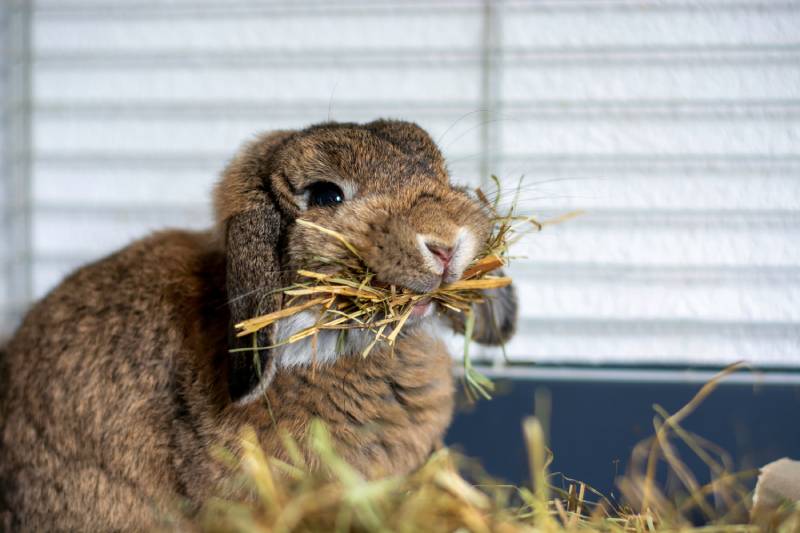
6. They Can Be Spayed/Neutered
Spaying and neutering are essential procedures to consider for your rabbit’s overall health and well-being. Spaying and neutering help control the rabbit population, reducing the number of rabbits in shelters or abandoned. Spaying and neutering can prevent reproductive cancers and other health issues in rabbits. Altered rabbits are less likely to exhibit aggressive or territorial behaviors, making them more suitable as pets.
Cons of Pet Rabbits
1. Indoor Rabbits Require a Lot of Time and Space
Indoor rabbits require ample space for their hutch or cage, exercise area, and toys, which may be challenging in smaller living spaces. You must rabbit-proof your home to protect both your rabbit and your belongings from potential damage caused by chewing or digging.
If anyone in your household has allergies, an indoor rabbit may exacerbate their symptoms due to fur and hay exposure. Indoor rabbits may require more frequent cleaning of their living area to maintain a hygienic environment.
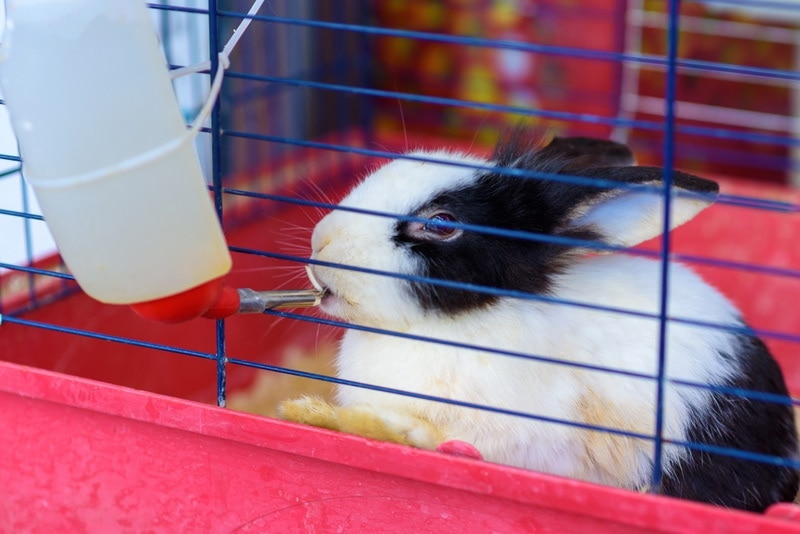
2. Outdoor Rabbits May Not Be as Safe or Healthy
Outdoor rabbits are more vulnerable to predators, extreme weather conditions, and parasites. Outdoor rabbits may struggle with temperature fluctuations, which can cause stress and negatively impact their health. They may have less interaction with their human family members, leading to reduced socialization and bonding opportunities. It may also be more challenging to monitor your rabbit’s health, eating habits, and behavior when they live outdoors.
3. Constraints of Living Spaces
Some hutches may not provide enough living space for rabbits to move around comfortably, leading to a lack of exercise and potential health issues. High-quality rabbit hutches can be expensive, especially if you require a larger size or custom features. Poorly designed hutches may not offer adequate ventilation, leading to a buildup of ammonia from urine, which can harm your rabbit’s respiratory system.
Play areas often require supervision, as rabbits can become destructive or escape if left unattended. A sizable play area may not be feasible for those with limited living space. You’ll need to rabbit-proof the play area, which can be time-consuming and challenging.
Yards leave rabbits more vulnerable to predators, extreme weather conditions, and parasites. You’ll need secure fencing to prevent your rabbit from escaping and to protect them from potential threats. Maintaining an outdoor yard requires regular cleaning, lawn care, and ensuring that the area remains free of toxic plants or harmful objects.
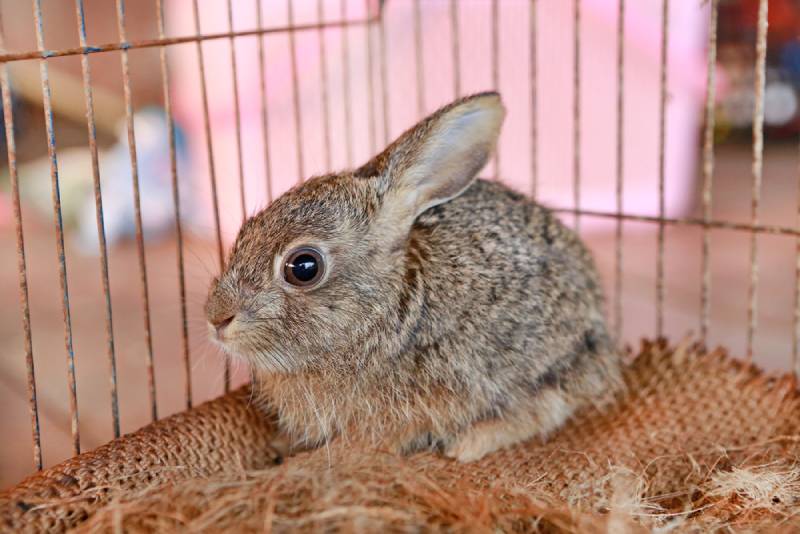
4. Food Storage and Balancing Nutrition Can Be Challenging
Hay can take up considerable storage space and may attract insects, rodents or develop mold if not stored properly. Hay can also exacerbate allergies in some individuals, which may be a concern for households with allergy sufferers.
Feeding too many pellets can lead to obesity and health issues in rabbits, so it’s essential to monitor portion sizes. Some rabbits may become picky eaters, choosing pellets over other essential food items like hay. Fresh vegetables have a shorter shelf life and can spoil quickly, leading to waste. Some vegetables can be toxic to rabbits, so it’s crucial to research and ensure you’re providing safe options.
Overfeeding treats can lead to obesity, dental issues, and an unbalanced diet. Rabbits may develop a preference for treats over healthier food options, leading to nutritional deficiencies.
5. Spaying/Neutering Can Be Risky and Expensive for Rabbits
If you’re going to keep multiple rabbits, spaying and neutering are necessary to prevent unwanted litters and behavioral issues. But as with any surgery, spaying and neutering carry some risks, including anesthesia complications or post-operative concerns. The cost of spaying and neutering can be prohibitive for some pet owners, although many low-cost options and financial assistance programs are available.
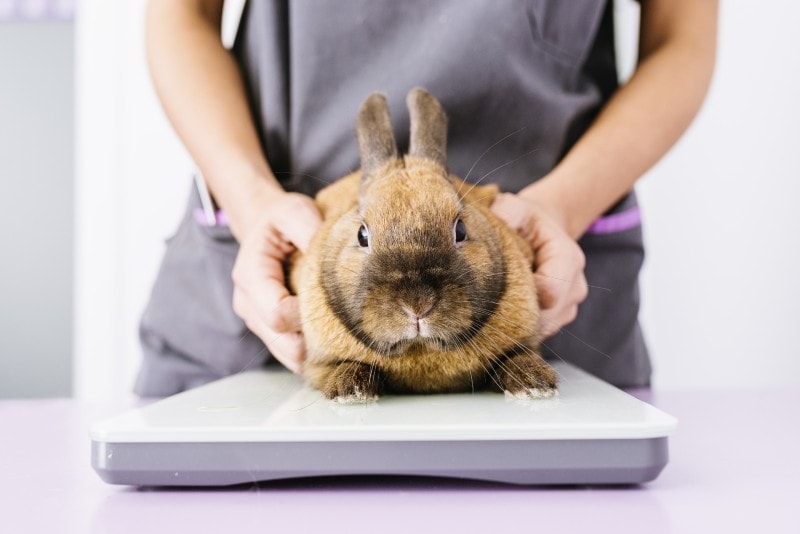
6. Care involved
Rabbits used to be considered a child’s pet and typically left to fend for themselves at the bottom of the garden. However, we now know that the care, environment, costs of health care, and mental stimulation are more complex and thought should be put into whether this is the right pet for you.
Tips for Caring for Your Pet Rabbit
If you’ve decided that keeping a rabbit is for you, here are some tips for caring for them.

Conclusion
Caring for a pet rabbit can be an incredibly rewarding experience, but it’s essential to understand the needs of your furry companion. By following the tips provided here, you can ensure your pet rabbit is healthy, safe, and happy. With plenty of fresh food, exercise, stimulation, and love, you can provide a wonderful home for your pet rabbit. Have fun bonding with your bunny!
Featured Image Credit: Wanwajee Weeraphukdee, Shutterstock









